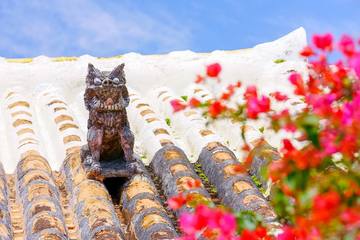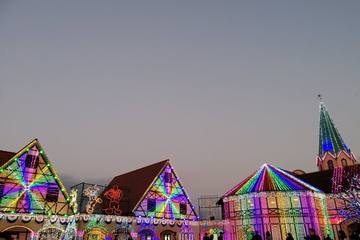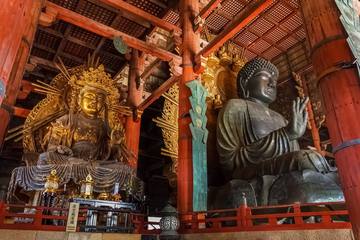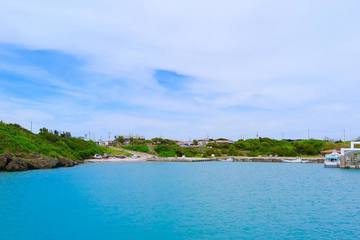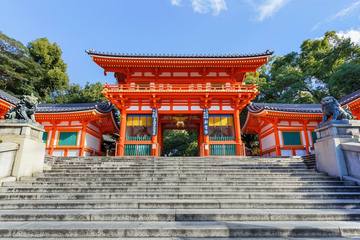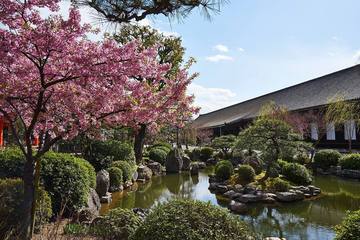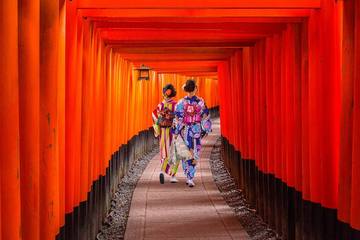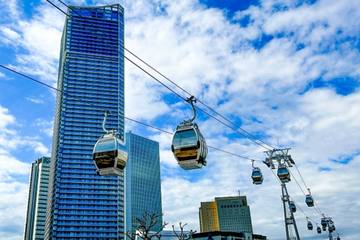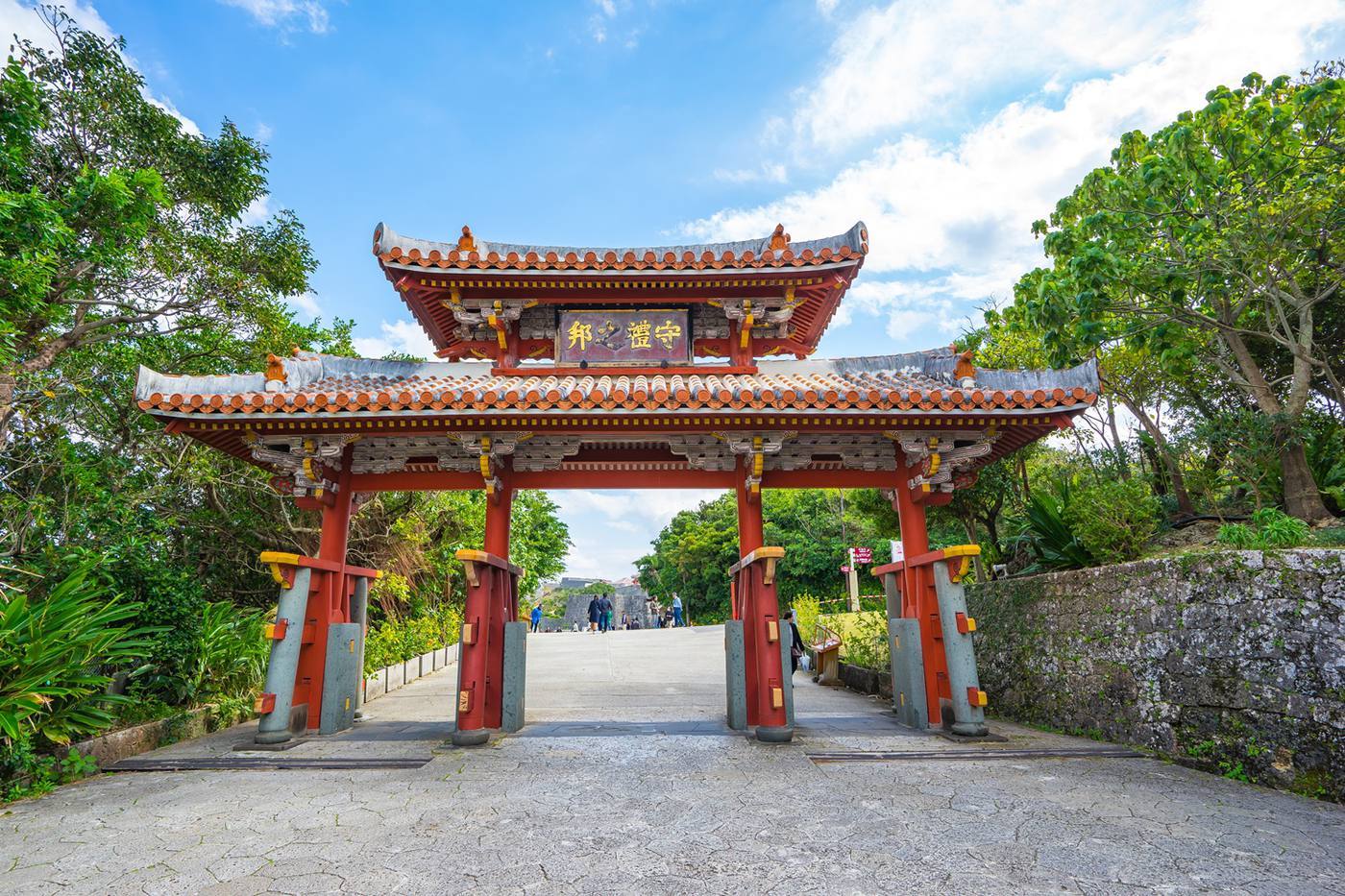
What is Shuri Castle? Basic information about a popular tourist spot where you can learn about Okinawa's history.
When you think of Okinawa, you might picture its blue seas and beaches. But how about exploring not only the breathtaking views but also the unique history and culture of Okinawa? Have you ever considered that? Shuri Castle, a symbol of the Ryukyu Kingdom that lasted for about 450 years, stands as a landmark of Okinawa. It's not just a tourist spot, but also cherished by the people of Okinawa. In this article, we'll introduce the history of Shuri Castle, how to get there, its highlights, and recommended routes for those interested.
*This article is translated using ChatGPT.
For the latest information on each tourist spot and facility, we recommend checking the official website.
- 日本 、沖縄県
INDEX
Kyushu-Okinawa Summit and Shuri Castle
Listing as a World Heritage Site
Impact and Reconstruction of the Shuri Castle Fire
Cost and Timeline of Reconstruction
Access and Admission Fees to Shuri Castle Park
Highlights of Shuri Castle Park Sightseeing
Exploring the Surrounding Castle Town is Also Recommended
What is Shuri Castle?
First, let's check out the history and get to know Shuri Castle better. When you visit, take a stroll through its grounds and trace the remnants of the Ryukyu Kingdom era.
History of Construction
Founded in the 14th century
Shohashi unified the powerful clans known as "Aji," who had been engaged in conflicts and reconciliations, establishing the first centralized authority. This marked the beginning of the Ryukyu Kingdom led by the Shō family, and with its founding, Shuri Castle was built. The castle, referred to as a "gusuku," retained its unique fortress structure used in pre-kingdom Okinawa, featuring various facilities and courtyards within its curved walls.
Shuri Castle wasn't constructed all at once. The inner walls were completed in the early 15th century, while the outer walls were finished in the mid-16th century. The main hall, south hall, and north hall of Shuri Castle bear influences from both Chinese and Japanese architectural cultures due to the castle's historical ties with these countries. The palace served as a hub for politics, economic activities, and the arts, representing the centers of these respective cultures.
While under Chinese control, Shuri Castle experienced multiple instances of destruction and rebuilding. Simultaneously, it monitored the status of the Ryukyu Kingdom, which was a vassal state of the Satsuma Domain that invaded in 1609.
19th Century to the Battle of Okinawa
In 1879, the king was exiled from Shuri Castle, which was subsequently surrendered. The Ryukyu Kingdom became modern-day Okinawa, and Shuri Castle transitioned from being a royal palace to serving as a military base and school under Japanese control.
Then, in 1945, during the Battle of Okinawa in World War II, Shuri Castle suffered a devastating fire due to American military attacks. However, remnants of underground bunkers used as command centers by the former Japanese military during the war still remain, although they are not open to the public due to safety concerns.
After the war, the site became part of the campus of the University of the Ryukyus. Later, plans for the restoration of Shuri Castle were initiated.
After 20th Century
In 1992, the main hall, royal gardens, and castle gates were restored, and a section of Shuri Castle Park was opened to the public. Subsequent degradation of lacquer coatings and colors, as well as the peeling of gold leaf, prompted discussions about refurbishing the main hall to ensure the castle's preservation.
The restoration of the main hall of Shuri Castle began in 2016 and was completed in 2018.
Kyushu-Okinawa Summit and Shuri Castle
In 2000, the Kyushu-Okinawa Summit's social dinner was held in the north hall of Shuri Castle. The summit gathers leaders from advanced countries to discuss politics, economics, and other topics. Discussions at the summit covered poverty reduction, economic development, disease prevention, and trade.
During this summit, a 2,000 yen bill was issued based on a proposal by then-Prime Minister Keizo Obuchi. The gate depicted on the right side of the banknote's front is the "Shureimon" gate of Shuri Castle. It's said that there were also efforts within local banks to use this currency to support recovery.
Listing as a World Heritage Site
In 2000, Shuri Castle remains, the Sonohyan-utaki Ishimon gate, and the Tamaudun royal mausoleum were collectively registered as the "Gusuku Sites and Related Properties of the Kingdom of Ryukyu" as a World Heritage Site.
Shuri Castle, having played a crucial role as the political and diplomatic center of the Ryukyu Kingdom for a long time, was valued for its distinctive architectural style and techniques, earning high acclaim.
Impact and Reconstruction of the Shuri Castle Fire
Shuri Castle, which originated from a struggle over the throne in 1453, suffered a complete fire. It faced fire disasters four times throughout history in 1660, 1709, 1945, and the unexpected fifth occurrence in 2019. Here, we'll introduce the situation of Shuri Castle's reconstruction efforts.
Burned Buildings
On October 31, 2019, the news extensively covered the engulfed flames of Shuri Castle. The fire not only consumed the main hall but also quickly spread to the "Hoshimon" gate, the entrance to the "Una-" royal garden, and the "Shoin" adjacent to the south hall.
At the time, the "Shuri Castle Festival," which recreated ceremonies from the Ryukyu Kingdom era, was taking place. Rehearsals were held at the site until the night before the fire broke out, and it was reported that the site was unoccupied during the fire. Although the cause remains unclear, it was deemed non-suspicious. The restoration work had concluded in January 2019, and a new area called "Ouchibara" opened in February. The fire occurred in October, coinciding with the "Shuri Castle Festival." This event brought profound sadness and shock to the people.
Cost and Timeline of Reconstruction
The news of Shuri Castle's fire, a symbol of Okinawa, made headlines worldwide. The President of Taiwan expressed surprise and distress on Twitter, and offered a combined donation of 5.5 million yen ($55,000) from the Taiwanese government (3.5 million yen) and local Taiwanese organizations (2 million yen) to support reconstruction efforts in Japan.
Within Japan, in November 2019, the "Renaissance Resort Okinawa," a resort hotel in Okinawa, donated 1 million yen to aid the restoration. Furthermore, using the "furusato nozei" system, a crowdfunding campaign in Naha City attracted donations from around the world. Within just two days, it raised 100 million yen ($1 million), eventually amassing around 1 billion yen ($10 million). This reaffirmed Shuri Castle's significance as a vital symbol of Okinawa.
Wood Procurement and Volunteer Efforts
During the reconstruction process, wood procurement has become a notable challenge. While the previous restoration heavily used Taiwanese hinoki cypress, current regulations have restricted logging. The direction now is to primarily use domestic hinoki cypress, but finding suitable large-diameter trees is expected to take time due to their scarcity worldwide.
Despite these challenges, the reconstruction efforts continued. Volunteers started removing plaster meticulously from salvaged roof tiles in March 2020. Volunteers are still being sought even at this point.
Accessible Areas for Visitors
Shuri Castle Park, which had to temporarily close due to extensive facility damage, currently (as of May 2020) allows visitors to explore about 80% of the pre-fire areas. The paid areas, including the main hall, are under reconstruction and not accessible.
You can still freely visit the "Shureimon" gate, a symbol of Okinawa built in the 15th century, which burned during the Battle of Okinawa and was subsequently rebuilt, the "Enkanchi" reservoir built in 1502 to collect rainwater, and the "Benzaiten Hall" situated at the center of the reservoir.
For the latest information about accessible areas and events, please refer to the official website.
Access and Admission Fees to Shuri Castle Park
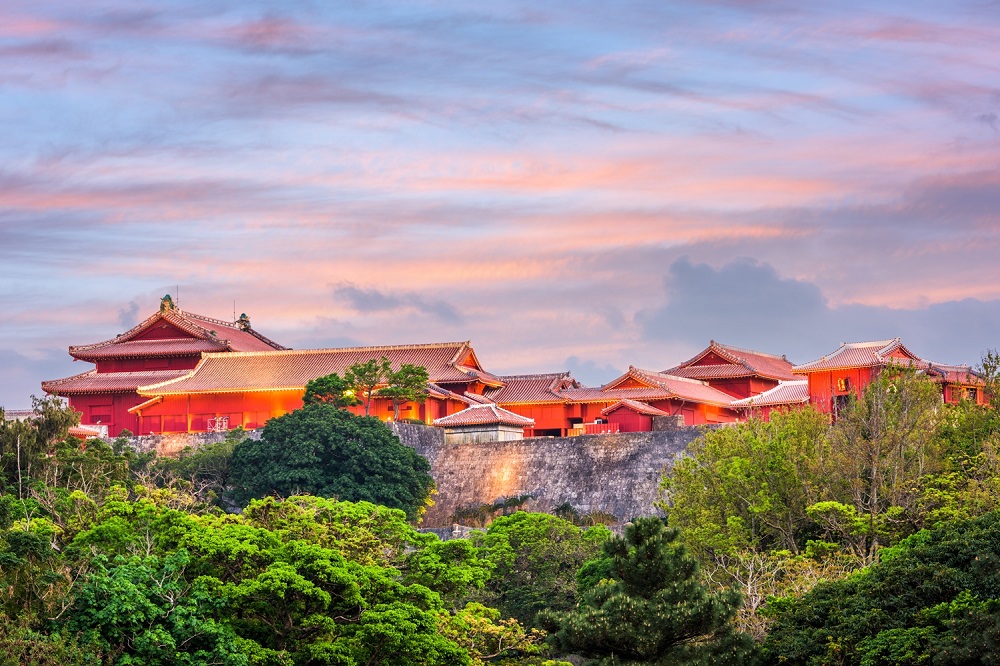
Let's check out the essential information about accessing Shuri Castle and its operating hours.
Yui Rail
Ride the Okinawa Urban Monorail, known as the "Yui Rail," and get off at the nearest station, "Shuri" Station. From there, it's about a 15-minute walk to Shuri Castle Park. You can also take a bus from the Shuri Station Bus Stop. Get off at "Shurijomae" and you'll reach the Shureimon gate in just a minute. You can also catch the Yui Rail from the airport.
Bus Routes
There are mainly three bus routes to Shuri Castle:
■ Route 1 or 14 (City Line) or Route 346 (Suburban Line)
Get on at the Shuri Station Bus Stop and get off at the "Shurijo Koen Iriguchi" stop. Then, it's about a 5-minute walk to Shureimon gate.
■ Route 7 or 8 (Shurijo Machi Line)
Get off at "Shurijomae." It's about a 1-minute walk to the Shureimon gate.
■ Route 9 or 13 (City Line) or Route 25 or 97 or 125 (Suburban Line)
Get off at "Yamakawa." It's about a 15-minute walk to the Shureimon gate.
Taxi
From Naha Airport, it takes about 40 to 60 minutes to arrive. You can hail a taxi in town, or there are options for booking taxis with fixed fares, like sightseeing taxis.
From places like Kokusai Dori or Mitsukoshi Mae in Naha City, it takes around 15 to 25 minutes. From Shikina-en, it's about 10 to 20 minutes. Taxi fares are relatively reasonable compared to the mainland.
Private Car or Rental Car
From Naha IC, it's about a 15-minute drive. If you're coming from Naha Airport, head out to National Route 331 and towards the center of Naha City.
If you use Naha Airport Expressway "Toyomichicho Nagaji IC," it becomes National Route 329.
There are many private parking lots in the vicinity. Prefectural-owned parking lots are mostly located underground, with a usage limit of 3 hours.
Admission Fees
Since the paid areas are not accessible due to reconstruction (as of May 2020), you can enter everything for free.
Before the fire, the admission fees for the paid areas were 830 yen for adults, 630 yen for middle/high school students, and 310 yen for elementary/junior high school students.
※Previously, it was 820 yen for adults and 620 yen for middle/high school students. The prices were changed in October 2019 due to the consumption tax revision.
Operating Hours
The opening hours for the free areas are 8:00 AM to 7:30 PM. From July to September, it's 8:00 AM to 8:30 PM, and from December to March, it's 8:00 AM to 6:30 PM. When planning your visit, make sure to check the latest information on the official website or other sources.
Shuridokan includes a restaurant, shops, and an underground parking lot. It's closed on the first Wednesday of July and the following day.
Highlights of Shuri Castle Park Sightseeing
Shureimon Gate
The first thing that welcomes you upon entering Shuri Castle Park is the vermilion-colored gate with a Chinese-style design. The inscription on the gate's plaque means "Ryukyu values courtesy." Shurei means "upholding courtesy." After being destroyed in the Battle of Okinawa, it was the first part of Shuri Castle to be reconstructed. It's also featured on the 2,000 yen banknote.
Sonohyan Utaki Ishimon Gate
Built during the reign of King Sho Shin in 1519, this gate was used for prayers for safety. It wasn't a gate for people but served as a sacred space for worshiping gods. After restoration in 1957, it was also registered as a UNESCO World Heritage site.
Hoshinmon Gate
This is the last gate leading to the main hall and is believed to have been constructed before 1562. There are three entrances, with the central one reserved for high-ranking individuals like kings and envoys from China. Behind this gate, there used to be the main hall that got destroyed. Amidst the destruction, a pair of large dragon pillars from the main hall barely survived, and in December 2019, their images were revealed to the press at the fire site. These dragon pillars are also featured in the campaign logo for reconstruction.
As of May 2020, you can visit up to the front of Hoshinmon Gate. There's information suggesting that the reconstruction site might also be opened for public viewing, so let's hope for the earliest possible opportunity to see the restored main hall and the pair of dragon pillars.
Ryuhi Spring
This spring was once used as drinking water for the palace. The sculpture of a dragon spouting water has a history of about 500 years. It's said that when emperors from China and other dignitaries visited the Ryukyu Kingdom, they would have this spring water carried to their lodgings near the harbor every day.
Azana of the West
It's an observatory located on the western wall, at an elevation of 130 meters. On clear days, you can enjoy a panoramic view of Naha's cityscape, Naha Port, and even the Kerama Islands. It's also popular as a sunset spot and perfect for photography.
Recommended Tour Route
With so many attractions in Shuri Castle, it's easy to get lost on how to navigate it all. In about 30 to 40 minutes, you can cover the entire park. Starting from Shureimon Gate, moving on to Ryuhi Spring, Zuisenmon Gate, Rokokumon Gate, and arriving at the front of Hoshinmon Gate. Then, proceed in the direction of Shureimon Gate, circling around Kyonouchi and Azana of the West before concluding. If you want to take your time, it might take around an hour.
You can download model course maps and view facility maps on the official website, so be sure to check those out.
Exploring the Surrounding Castle Town is Also Recommended
It's not just the inside of the castle; exploring the town around Shuri Castle is also recommended. Shuri Castle's castle town spreads across a small hill. "Shuri Kinjocho Ishidatami-michi" is a charming 300-meter-long path paved with Ryukyu limestone. Originally built around 1522 and spanning about 4 kilometers, it was destroyed due to war. The area called Shuri Kinjocho Muraya serves as a resting space with toilets and smoking areas. Along both sides of the path, you'll find traditional red-tiled and stone-walled houses. You're free to explore, but please be mindful as people live there.
Additionally, around Shuri Castle, you'll find stylish lunch spots, cafes, and restaurants. Delicious Okinawan soba, goya champuru, traditional tea, and more can be enjoyed before or after sightseeing.
Souvenirs
Don't forget to grab some souvenirs after your exploration. The souvenir shop at Shuri Castle offers items like red-patterned amulets with salt, believed to ward off evil spirits, and Shuri Castle limited edition original goods. There are also unique items like hand puppets and stuffed animals featuring Shuri Castle's characters. Enjoy the souvenir hunt!
If you want to get to know Shuri Castle and other famous spots in Okinawa better, why not join a tour?
Instead of just visiting, you can enjoy sightseeing even more by understanding the history. While audio guides and signs can be helpful, why not enhance your trip by getting detailed explanations directly from local guides? With Veltra's local optional tours, you can book guided walking tours. There are also bus tours available that efficiently take you around historical spots and let you learn!
※ Please note that transportation, facility fees, timings, etc., may change without prior notice. For the latest information, be sure to check the official website as well.
*Thank you for reading the article!
To improve YOKKA's service, we kindly request your participation in a survey below.
YOKKA


